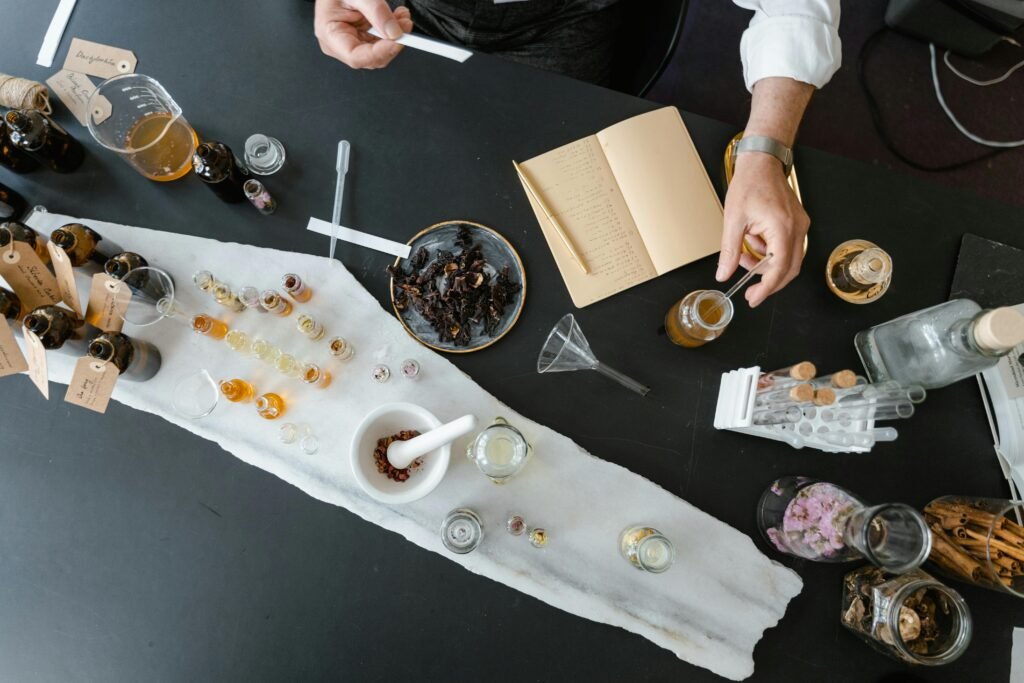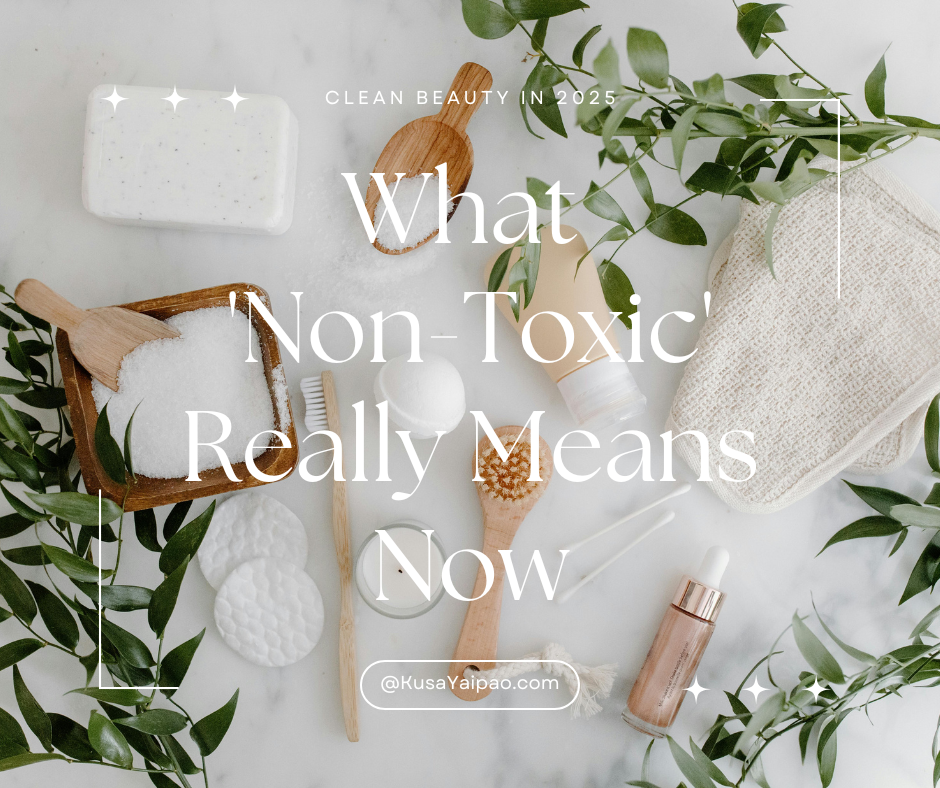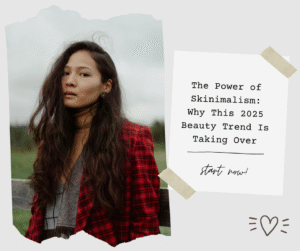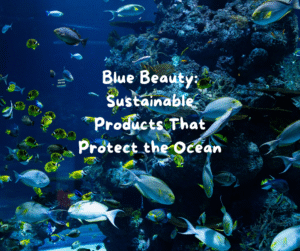This post may contain affiliate links. I may receive compensation if you sign up for or purchase any products through the links below. As an Amazon Associate and affiliate marketer for many other businesses, I earn from qualifying purchases. Please read my disclosure for more information.
Understanding Clean Beauty
Clean beauty is a term that has evolved significantly over the past few years, driven by an increasing consumer demand for transparency in the beauty industry. At its core, clean beauty refers to products that prioritize the use of safe and non-toxic ingredients. This concept emerged as a reaction to the potentially harmful compounds often found in conventional beauty products, prompting a shift toward formulations that are not only effective but also environmentally sustainable and less damaging to human health.
Historically, the definition of clean beauty has been influenced by several movements within the broader wellness industry. For instance, the rise of the natural and organic movements in the early 2000s set the groundwork for what we now understand as clean beauty. However, while these terms often emphasize ingredient sourcing and purity, clean beauty goes a step further by focusing on comprehensive ingredient safety and ethical considerations in production processes. This differentiation is crucial; natural products can still contain harmful substances, while organic formulations may not necessarily be free from synthetic additives.
In recent years, clean beauty has seen a remarkable expansion, supported by the proliferation of information available to consumers. Shoppers are now more aware of potential toxins like parabens, sulfates, and phthalates, pushing brands to reformulate their offerings. The clean beauty movement has prompted retailers to embrace this ethos, with many now creating specific sections dedicated to clean products. This trend reflects a broader societal shift toward holistic health and well-being, where individuals strive to make informed choices that align with their values. As we approach 2025, the clean beauty narrative continues to evolve, reflecting not only consumer preferences but also a deeper understanding of what ‘non-toxic’ truly means in the context of beauty and skincare.
The Rise of Non-Toxic Labels
The concept of ‘non-toxic’ has become increasingly prominent in the beauty industry, evolving from a niche category to a mainstream expectation among consumers. This shift reflects a broader understanding of the ingredients found in beauty and personal care products, leading to an increased demand for transparency in product formulations. Brands that adopt non-toxic labels often highlight this aspect as a key feature, emphasizing their commitment to consumer health and environmental sustainability.
To be classified as non-toxic, a product typically must be free from harmful chemicals and toxic substances that can cause adverse effects on human health or the environment. Common ingredients that disqualify a product from being labeled non-toxic include parabens, sulfates, synthetic fragrances, and phthalates. Each of these chemicals has been scrutinized for their potential health risks, prompting consumers to seek safer alternatives. As a result, many brands now utilize third-party certifications or offer transparent ingredient lists to substantiate their non-toxic claims.
This evolving landscape has been driven by consumer concerns about the safety of beauty products. Awareness campaigns, social media influence, and a general increase in public knowledge about toxic ingredients have played significant roles in shaping consumer behavior. Many individuals now actively seek out brands that disclose their ingredient sourcing and demonstrate a commitment to ethical practices. The rise of non-toxic labels not only serves as a marketing strategy but also reflects a growing consumer ethos prioritizing health and safety, thereby encouraging brands to meticulously vet their formulations.
As the beauty industry continues to adapt to these changing consumer expectations, it is essential for brands to navigate the complex landscape of non-toxic claims responsibly. Transparency, accountability, and a genuine commitment to creating safer products will continue to set apart those brands that successfully engage a discerning audience in search of truly non-toxic beauty solutions.
Regulatory Changes and Industry Standards
The landscape of the beauty industry is undergoing significant transformation, particularly concerning the regulatory frameworks that dictate what can be marketed as clean and non-toxic. By 2025, various governmental bodies and organizations, driven by increasing consumer awareness and demand for safety, are poised to implement more stringent regulations surrounding ingredients used in cosmetic products. This shift aims to guarantee transparency, efficacy, and safety, which are foundational principles in the clean beauty movement.
In the United States, entities such as the Food and Drug Administration (FDA) have begun to re-evaluate their guidelines regarding cosmetic safety. Presently, the FDA does not require a pre-market approval for beauty products, but emerging legislation could mandate greater compliance, including ingredient labeling and safety testing requirements. Similarly, the European Union has set a precedent with its cosmetics regulation, already prohibiting numerous harmful substances and facilitating a framework that may inspire U.S. policies in the coming years.
Additionally, organizations focused on sustainable beauty and ethical practices are gaining influence. These include the Campaign for Safe Cosmetics and the Environmental Working Group (EWG). As these bodies advocate for better regulation within the industry, they provide consumers with reliable resources to identify what constitutes as non-toxic or clean. Enhanced standards from such organizations can drive brands to reformulate their products, moving away from harmful chemicals and towards safer alternatives, thus redefining the market’s understanding of non-toxic beauty.
As consumers continue to demand safer products, the industry is likely to see a rise in certifications and seals of approval that signify compliance with these emerging regulations. The confluence of consumer pressure, regulatory change, and evolving industry standards will ultimately define what clean beauty, and particularly non-toxic products, entail in the near future.

The Science Behind Non-Toxic Ingredients
The concept of non-toxic ingredients within the clean beauty industry is built upon a foundation of scientific research aimed at delineating safe from harmful substances. Over recent years, a plethora of studies have emerged, elucidating the composition and effects of various beauty products on human health and the environment. As consumers become increasingly health-conscious, understanding the science behind non-toxic ingredients is paramount.
Non-toxic ingredients typically encompass those that do not possess harmful properties, such as carcinogenic agents, endocrine disruptors, or allergens. Ingredients like botanical extracts, plant oils, and biodegradable compounds often emerge as preferred alternatives in clean beauty formulations. For example, research has demonstrated that natural oils, such as jojoba oil, provide moisturizing benefits without the adverse effects associated with synthetic counterparts.
The benefits of non-toxic ingredients extend beyond mere safety; they are also linked to positive skin health outcomes. Studies have shown that formulations highlighting ingredients such as aloe vera, chamomile, and green tea can enhance skin hydration and reduce inflammation, thereby promoting both aesthetic and physiological wellbeing. These compounds naturally contain antioxidants, which protect the skin from environmental stressors.
Expert opinions from dermatologists and toxicologists frequently emphasize the importance of scrutinizing ingredient lists to make informed choices. By advocating for transparency in labeling, consumers are empowered to understand the constituents of the products they apply, enabling them to opt for formulations devoid of potentially harmful substances. This shift towards non-toxic beauty is not merely a trend; it signifies a growing awareness surrounding the intersections of personal health, environmental impact, and ethical considerations in cosmetic use.
A rigorous understanding of clean beauty necessitates an exploration of scientific research that supports the claims surrounding non-toxic ingredients. The growing body of evidence provides consumers with the tools necessary to navigate an increasingly complex marketplace while prioritizing safety and health in their beauty routines.

Consumer Awareness and Education
As the clean beauty movement continues to gain momentum, the need for consumer awareness and education becomes increasingly critical. In 2025, understanding what ‘non-toxic’ truly means is essential for consumers who wish to make informed choices about their beauty products. This growing awareness empowers individuals to scrutinize product ingredients more closely, ensuring they avoid harmful compounds often hidden within complex labels.
To become more informed, consumers can start by familiarizing themselves with common toxic ingredients that may be present in traditional beauty products. Ingredients such as parabens, phthalates, and formaldehyde-releasing agents have raised concerns due to their potential health risks. By developing a deeper knowledge of these substances, individuals can better navigate the marketplace, identifying brands that prioritize transparency and safety.
Furthermore, the significance of certification labels should not be overlooked. Various certifications exist to help guide consumers in their quest for truly non-toxic beauty products. Labels such as USDA Organic, COSMOS, and EWG Verified indicate that a product meets specific safety standards and has been assessed for toxic ingredients. Recognizing these certifications can simplify decision-making and enable consumers to select products with confidence, knowing they adhere to higher standards of safety.
In addition to understanding ingredients and certifications, consumers should be cautious of marketing claims. The beauty industry often employs terms like “natural,” “organic,” and “clean” without stringent regulation, leading to ambiguity. To identify genuine non-toxic beauty products, consumers should research brands and seek out those with a commitment to transparency regarding their formulations. Online resources and community forums can provide valuable insights into the credibility of products and the integrity of brands.
Ultimately, by enhancing their knowledge and understanding of clean beauty, consumers can contribute to a more conscious marketplace that prioritizes health and well-being. Educated consumers can advocate for transparency in product formulation, supporting brands that align with their values and ensuring that the clean beauty evolution continues to thrive.
The Role of Brands and Innovations
The landscape of clean beauty in 2025 is significantly shaped by brands that prioritize non-toxic formulations and sustainable practices. Leading the charge are innovative companies dedicated to redefining beauty standards by delivering products that are both effective and environmentally responsible. These brands invest substantial resources into research and development, creating formulations free from harmful chemicals while embracing natural ingredients derived from sustainable sources. As consumer awareness regarding the impact of cosmetic ingredients on health and the environment increases, brands are responding by adopting transparent labeling practices, allowing consumers to make informed choices.
Moreover, advancements in technology have played a pivotal role in enhancing clean beauty products. Many brands have begun harnessing the power of biotechnology to create potent and safe alternatives to conventional synthetics. For example, the use of lab-engineered ingredients ensures that products maintain efficacy without compromising on safety. This integration of technology not only enables cleaner formulations but also facilitates the reduction of waste through more efficient production processes.
The market’s response to these initiatives has been overwhelmingly positive. As more consumers demand accountability and transparency from beauty brands, those that lead the non-toxic movement are witnessing a surge in popularity. Collaborations with environmental organizations and influencers further amplify their reach, creating communities that champion the clean beauty message. Additionally, retail partners are increasingly prioritizing these innovative brands, leading to more significant visibility in stores and online platforms.
As we look towards the future, it is evident that the role of brands in the clean beauty sector is crucial. Innovations that focus on non-toxic ingredients and sustainability are reshaping consumer expectations and, in turn, prompting more brands to adopt similar practices. The collective efforts of these brands not only define the present landscape but also pave the way for a more responsible and conscious future in beauty.
Sustainability and Ethical Practices
As the clean beauty movement evolves, the interconnectedness of sustainability and ethical practices has become increasingly paramount. Consumers are not only concerned with the ingredients in their products, but also the environmental impact associated with their production and disposal. Non-toxic beauty products are often crafted with sustainability in mind, focusing on ingredients that are sourced responsibly, ultimately promoting a healthier planet.
A key component of sustainable clean beauty is ingredient sourcing. Many brands are now prioritizing natural, organic, and renewable resources, which minimize the depletion of finite materials and reduce the carbon footprint of their entire supply chain. Additionally, the preference for locally sourced ingredients can foster economic sustainability by supporting local farmers and reducing transportation emissions. By adopting these sourcing methods, clean beauty brands align their practices with the values of eco-conscious consumers.
Packaging also plays a critical role in the sustainability of clean beauty products. Traditional beauty products often come in non-recyclable materials, contributing to the significant waste issue facing the planet today. In contrast, clean beauty brands are increasingly opting for biodegradable, compostable, or recyclable packaging solutions. This shift not only lessens the impact on landfills but also encourages consumers to adopt more sustainable habits. Furthermore, refillable options are becoming more commonplace, allowing for continued use of packaging while minimizing waste.
The ethical aspects of the beauty industry also warrant attention. The transparency that clean beauty offers empowers consumers to make informed choices about the products they apply to their skin. This transparency includes the ethical treatment of workers throughout the production process, ensuring fair wages and safe working conditions. By choosing clean beauty options, consumers advocate for a more equitable industry that prioritizes not only health but also human rights.
Overall, the clean beauty movement signifies a progression towards greater environmental and social responsibility within the beauty sector, providing a framework for the future of sustainable and ethical practices.

Future Trends in Clean Beauty
As we approach 2025, the clean beauty landscape is poised for significant transformation driven by evolving consumer attitudes, technological advancements, and an expanding understanding of what constitutes “non-toxic” products. One of the primary trends expected is a shift in consumer behavior towards increasingly informed purchasing decisions. Today’s consumers are more educated and discerning about ingredients, seeking transparency from brands. This emphasis on transparency is likely to shape the clean beauty industry, encouraging companies to disclose their ingredient sourcing, production methods, and environmental impact.
Furthermore, advancements in formulation technology will play a pivotal role in the future of clean beauty. Innovations in extraction methods and biotechnology are expected to yield new, effective natural ingredients that can enhance product performance without compromising safety. As a result, consumers may witness a rise in products that not only meet their clean beauty standards but also rival traditional cosmetics in efficacy. This evolution could redefine formulations, making plant-derived and biotechnological ingredients more mainstream in beauty products.
Additionally, sustainability will remain a critical focus in the clean beauty category. Brands are increasingly recognizing the importance of not just being “non-toxic” but also environmentally responsible. This may lead to a rise in circular beauty practices, where packaging is recyclable, refillable, or biodegradable, thus reducing the carbon footprint associated with beauty products. Moreover, as more consumers advocate for cruelty-free practices, the industry may see a stronger emphasis on ethical sourcing and testing methods.
In sum, the trends in clean beauty anticipated by 2025 will reflect a combination of heightened consumer consciousness, innovative ingredient advancements, and a commitment to sustainability. These developments will potentially redefine not only the standards of clean and non-toxic beauty but also reshape the overall consumer experience in the cosmetics industry.
Conclusion and Practical Takeaways
As we move into 2025, the concept of clean beauty is evolving, and the term “non-toxic” carries significant weight in our skincare and cosmetic choices. It is essential for consumers to recognize that this terminology is not standardized across the industry. Instead, it encompasses a spectrum of practices and ingredients that emphasize safety, environmental sustainability, and ethical sourcing. Understanding this complexity is crucial for consumers who want to make informed choices about the products they incorporate into their beauty routines.
To effectively engage with clean beauty, consumers should be proactive in researching the brands and products they support. Familiarizing oneself with ingredient labels is a foundational step; recognizing potentially harmful substances and opting for products that prioritize natural, non-toxic components can substantially impact overall health. Additionally, consumers can advocate for transparency by choosing companies that openly disclose their ingredient sources and formulation processes. This ensures that the products align with their definitions of non-toxic beauty.
Moreover, staying informed about regulatory changes and scientific developments in the beauty sector remains vital. With ongoing research into toxicological effects and sustainable practices, the landscape of clean beauty will continue to change. By following trusted resources and engaging in conversations surrounding clean beauty, consumers can become empowered to navigate this space more effectively.
In conclusion, as the beauty industry continues to embrace cleaner, safer formulations, consumers must be vigilant and discerning. Embracing clean beauty is not only about choosing products that are marketed as non-toxic but also understanding the broader implications of these choices for health and the environment. Making informed, conscious decisions can lead to a more sustainable and fulfilling beauty routine both now and in the future.











